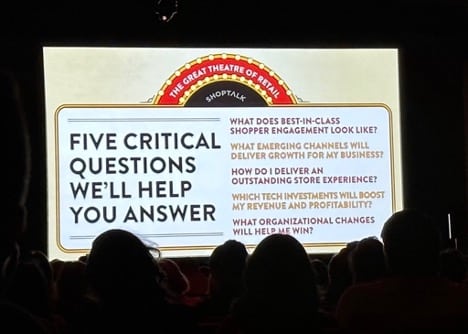Shoptalk is one of the premier events in the retail industry, bringing together leading retailers, thought leaders, and technology providers to discuss the latest trends and innovations in commerce.
This year’s conference supplied a wealth of insights into the current state of the retail landscape and the emerging trends shaping its future.
One of the key sessions I attended summarized the state of the Retail industry and covered five key questions:
- What does a best-in-class shopper engagement look like?
- What emerging channels will deliver growth for my business?
- How do I deliver an outstanding store experience?
- Which tech investments will boost my revenue & profitability
- What organizational changes will help me win?
I took three of these points and summarized the themes throughout the conversations I had with Retail leaders through a data lens.

Which Tech Investments Will Boost My Revenue & Profitability?
Unified Omnichannel Analytics
Retail in 2022 was wrapped up in the supply chain concerns. What a difference a year makes. This year was all about how retailers are finally coming to terms with what it takes to deliver an optimal customer experience. Data integration and the ability to harvest and use their data is not something you just magically wave a wand with an off-the-shelf solution. It takes an investment in a data team that knows what they’re doing.
I can’t tell you how many times I heard “unified omnichannel analytics”, a concept that most retailers I spoke to were admittedly lacking. Some were further along the maturity curve and seeking advanced AI (Artificial Intelligence), while others were still getting by with spreadsheets. A common theme was siloed channels and the need to bring those views together.
Speed to Insight
2023 is an “everything now economy”, and for a retailer to survive means staying ahead of well… everything.
“Speed to insight” was a clear evolution compared to previous years. In the past, retail leaders assumed a Customer Data Platform (CDP) could solve all their data issues. But now they’re realizing these bundled CDPs (Customer Data Platform) don’t do it, Excel isn’t cutting it, and the need for analytics is more real than ever. Realizing the need for a data warehouse was more prevalent than ever.
Decision Engines
On the more advanced spectrum of maturity, I heard a lot about “Decision Engines”, which is another way of saying Machine Learning models. Solutions like this have been commoditized to help handle everything from pricing and assortment to customer lifetime value models.
This is an area where retail is far ahead of many other industries, but even this bleeding edge technology still requires a company to have their data house in order. Pinterest, for example, is taking all these different proxies of what individuals are doing when they are searching, pinning and putting together different looks. The AI models are learning why and how, then suggesting that these shoes match with those pants, this top matches with these earrings.
These relevancy models and the ability to have an ecosystem to capture and learn from is how they’re able to better serve their customers.
One company I spoke to is at the level of maturity where they are looking for packaged ML (Machine Learning) models that they don’t have to build themselves. They want to buy a pre-configured decision engine that has been trained on specific things and drop it into their data to supply insights on readily available data.
The companies that have already invested in their data infrastructure have the luxury of performing these advanced AI capabilities. These are the companies that can provide an interface for employees to tell them they’re almost running out of a certain product, how much to re-order, the promotion to run, and the best time to run it. Those companies that have not invested in their data infrastructure to this extent are feeling the pain of catching up. Human oversight is still necessary, but it automates the mundane and provides employees with the headspace to tap into their creativity.
Unfortunately, there is no quick way to leverage ML & AI without first investing in a data warehouse to unify your analytics. I’ve seen those companies that have cut corners and come right back to square one.
What Retail Organizational (Data) Changes Will Help Me Win?
Staying Lean, Agile, Doing More with Less
Then there were the talks with smaller retailers on the opposite end of the spectrum. One thing I love about Shoptalk is the varying levels of companies. I could chat with a Fortune 100 company looking for advanced AI capabilities and turn around and have another conversation with much younger startup companies that are punching well above their weight with very small lean teams. Staying lean, agile and frugal with technological spending was certainly the theme in conversations with smaller up-and-coming retailers looking to break through.
Yes, there were some retailers I spoke to where all their inventory is in Excel. They’ve seen companies invest heavily in ERP systems and get literally nothing out of it. Some of these companies are fine on Excel and will invest everywhere else because they need to be agile.
Tech investments must make sense for who you are.
Not every company needs a complex data stack to be successful. I was even questioning that in a lot of my candid conversations. Just get what you need and don’t overspend on technology for the sake of technology.
Use technology to make the customer relationship sticky and implement only what you need to deliver that experience and that’s it.
There’s a lot of noise in the retail space with ChatGPT, Metaverse and all the other hot trends retailers are tempted to chase to stay ahead. Keep that lean and mean approach in the forefront of your mind when you’re making these decisions. Unless it’s making a stickier customer relationship, driving revenue and profitability, why are you doing it?
Sophisticated ERP or CRM systems are fine and dandy, but if you’re a company with inventory refreshed every four to six months, it doesn’t make sense for you. Focus your investment on demand planning, working with influencers and getting your customers the products that they want.
Advocating for Better Data from Vendors
Other conversations revolved around the difficulty of smaller retailers and vendors working with POS (Point of Sales) data from big-box retailers like Target or Walmart. These companies are notorious for providing limited data. It’s hard for smaller retailers to know what to ask for. “Why aren’t you giving the data that makes sense for me to be successful in your ecosystem?” “Why don’t you give us an API?” or “what about modern data sharing?” With the emergence of modern technologies, combined with rising consumer expectations, the need for retailers to get the data in the formatting they need to be successful will become a necessity, not just a nice to have.
A solid data partner can advocate for you and really dig into those retailers and ask the hard questions on your behalf.
Because we are on the forefront of data sharing and data integration, we know how to apply the pressure and ask the right questions on behalf of the retailers or even work with something very legacy and archaic because often that’s all they’ll give you. We can help and have had many successful engagements to point to.
What Does Best-In-Class Shopper Engagement Look Like? “Maniacal Customer Experiences”
The bulk of the conversations I had and sessions I attended all came back to the same common thread of “maniacal customer experiences”.
The next generation is all about experiential shopping that combines social interaction with creativity. Live shopping is a huge craze in Asia, primarily in densely populated cities. Platforms like Pinterest are tapping into this, where Gen Z indulges in fun DIY projects and sharing ideas before shopping ever crosses their mind. It’s like shopping, but with a twist of social creativity.
Retailers like Ugg aren’t just trying to sell you cozy boots and slippers – they’re creating retreats and meditation sessions to give you a full-on experience. They’re also educating customers and sharing news through those experiences.
More retailers recognize the power of giving customers something unique and engaging. Some are even adding investing experiences to the mix – experiences that actually give back to the customer. It’s all about making shopping feel like more than just a simple transaction. And, of course, scaling those experiences to reach as many people as possible. Who knew that shopping could be so…enlightening?
The Grind of Disjointed Systems
One of my favorite coffee brands (that I definitely have currently stocked in my fridge), said all their systems, from E-com to brick and mortar to b2b, including loyalty programs—were separate. The result was in their own words “an extremely disjointed customer experience”. The branding doesn’t match their customer experience. They want to invest in improvements, but like many others, they don’t know what to do or where to start.
This hits on one of the key questions posed throughout Shoptalk sessions which was “how do I deliver an outstanding store experience, whether that’s online or in person?”
The conversation always came back to the starting point—your data.
The good news I had for most retailers is that you don’t have to rip and replace any of your systems. The solution is often a smart data warehouse. Maniacal customer experiences begin with unified omnichannel analytics data and the AI and Business Intelligence to go with it.
Live-Routing, DIY & Frictionless Buying Experiences
A well-known home security company I spoke to is revamping itself and their legacy systems. They recognized the potential of appealing to more of the DIY and tech-savvy audiences.
It brought me back to a similar experience I had recently where I was looking into their online offerings, but I couldn’t move through the buying process until somebody came to my home first. I just wanted to see my options, pick something and be able to use it. I ended up settling for another alternative that enabled me to just buy these products, find somebody on Handy and have them install it.
It was unsatisfying as a consumer knowing I had settled. Again, we’re in an everything now world. For me, settling didn’t offer peace of mind knowing I didn’t have the remote monitoring keeping me safe. I had to rely on AI to keep me safe.
So how do these companies reach new demographics and implement frictionless, delightful buying experiences? How can companies route specific buyer personas to the right channel in real time? Matching the buyers who want to talk to a real person, and get an in-person big, versus a DIY-er like me, who wants a different buyer journey?
It’s hard to execute these things successfully unless you’ve gathered some information on who you’re talking to. It’s the business owner bringing this all together with channel analytics so they can monitor and ensure they’re investing in the right places.
“The Little Surprises That Delight”
Who would’ve thought that buying pet toys or medication online would be a conversation piece? But brands like Chewy make the seemingly mundane a delightful experience.
Their maniacal focus on that frictionless customer experience and “pleasant” user experience is what has allowed them to scale and start disrupting these other markets because people trust them. These brand success stories all focus on putting those little pieces of making somebody feel good, delighted, or surprised. Little surprises are what keep a customer happy. Like getting a special treat in the mail on your dog’s birthday or receiving a sympathy card for a pet that passes away.
It makes those 50 bucks I’m spending every month not that big of a deal.
All these innovations and hype cycle trends need to be data driven. You need to have these technologies that allow you to be engaged where your customer is and be maniacal about staying in touch and in front of your customer.
Unless you’re one of the big behemoths, being on the bleeding edge of an “everything now” world is the only way retailers are going to survive.
You must do things that’ll make people talk about you. The best way of growing is still through word of mouth, and if you don’t have the remarkable throughout your customer life cycle, you’ll fall into the Bed Bath & Beyond category.
Retail brands must be exceptional, unique, remarkable, the purple cow. It’s all technology and data enabled.
3 Ways to Get Back to Retail Basics and Embrace Unified Omnichannel Analytics
Unified omnichannel analytics isn’t an off-the-shelf product
Imagine having a clear view of all your business operations from every angle, seamlessly integrated into one system. This isn’t an off-the-shelf product you can pick up at the store. It’s an investment of time and expertise that can transform the way you do business. With our managed platform, we’ll work with you to build the right solution from the ground up, whether it’s a fresh start or a migration of your current setup. But it’s not just about the technology – it’s about the insights and results that technology can deliver. We’re not just data analysts – we’re partners who will work closely with your team to ensure that every piece of information we generate is meaningful and actionable, driving efficiency every step of the way.
Invest in a Data Warehouse
Enable AI to do more of your tactical pieces as needed. For those companies running inventory on Excel, you’ll never fully unlock AI’s capabilities. You’re not going to grow while you’re on Excel. But what you can do is take your historical Excel sheets and move them into a data warehouse.
Now it’s ready to go. I’m not saying you need an ERP system. You can stay on Excel, but get data pipelines to push your historical excel sheets into a data warehouse, or even a modern data lake house, ready to unlock the true capabilities of AI. By leveraging the power of data pipelines, you can use modern technology to focus on specific areas where AI can make the most impact for your company.
Be surgical with technology investments
The disjointed customer experience creates a lot of unnecessary internal churn and external friction. Taking a good look at the systems you’re using and being very maniacal about customer experience is one that companies are still trying to figure out and catch up on.
Be surgical with the technology you invest in and make sure that whoever you’re working with isn’t selling you just to sell you. They need to become extremely aligned with your intent and the nuances of the industry, and ask you the hard questions. How is this technology going to elevate your customer experience? How is this going to improve the bottom line? How is this going to make you more efficient for you to get those shoes out one day earlier?
Reach out to schedule a 30-min introductory call with one of our data experts to discuss the topics above, or the current state of your data. We can help you achieve unified omnichannel analytics, whether it’s standing up a better data warehouse, advanced AI and ML models, and everything in between.
The next logical step forward for retailers is sometimes a step back to look at what’s either driving you forward or holding your customers back. It all comes back to your data.












